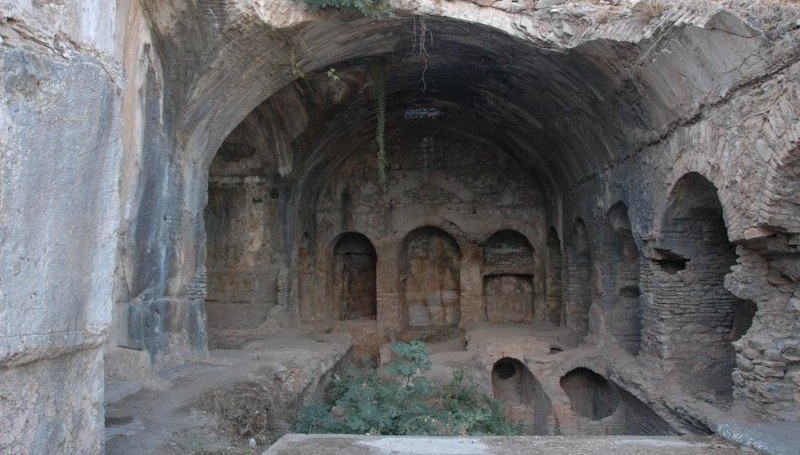Пещера Семи спящих отроков
The Cave or Grotto of the Seven Sleepers is on the northern slope of Mount Pion just 0.8 km from the lower entrance to Ephesus and is a place of pilgrimage for both Moslems and Christians.
Legend tells us that in the reign of the Emperor Decius around 250 BC seven young men became Christians and so refused to take part in ceremonies sacrificing animals to pagan gods. They were given time to recant but instead chose to give away all their belongings and fled to a cave to pray. There they fell asleep. On learning of this Decius ordered the cave to be sealed with them inside. Some two hundred years later, about 335 AD in the time of the Emperor Theododius II, the landowner broke open the cave to use it as a cattle pen. This woke the sleepers who sent one of their number to Ephesus to buy food. He was astounded by the number of churches there and by the freedom of Christians to openly worship, Christianity having by now become the only religion permitted in the Roman Empire. The market traders were equally surprised by the 200 year old coins he tried to spend.
The Bishop of Ephesus was sent for to talk to the young men, who told him their miraculous story and died while praising God. They were buried in graves dug in the cave where they had slept for so long. A brick-walled, marble-lined and mosaic-floored church was later built inside the cave, over the graves. A large dome was added above the cave in the sixth century.
The story was later told by Bishop Stephen of Ephesus and it was immediately accepted as evidence supporting the Resurrection, which was being debated by the Church at that time. The story was also told in the Holy Koran, in which the men were accompanied by a dog.
For hundreds of years after this many people wanted to be buried as close to them as possible because they were believed to be holy. Some Christians also believe that, many years earlier, Mary Magdalen had also been buried close by.
Excavations between 1927 and 1930 revealed hundreds of graves near the cave and inscriptions relating the legend on the walls of the church. Hundreds of terra cotta lamps dating from the fifth and sixth centuries were found. Most were decorated with Biblical scenes but some had images of pagan gods, despite their worship having been forbidden for hundreds of years.
Today you will find a number of open air restaurants selling authentic Turkish fare and a very interesting craft shop close-by.

